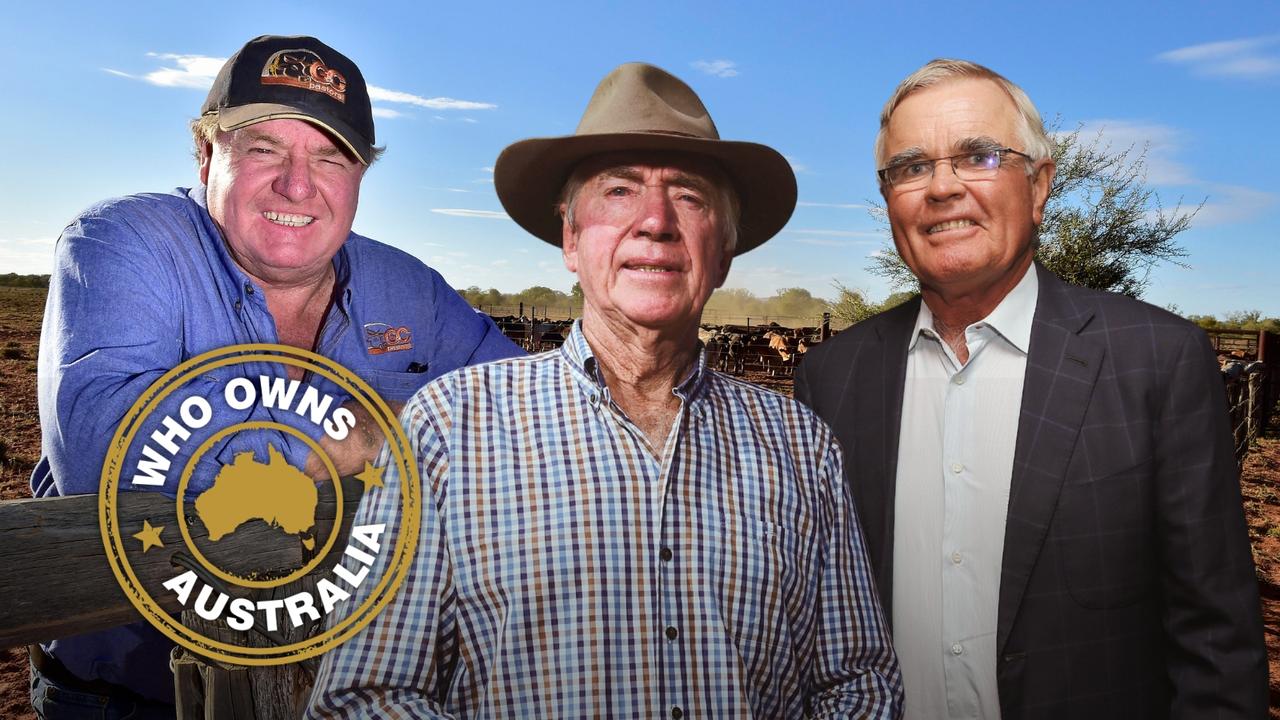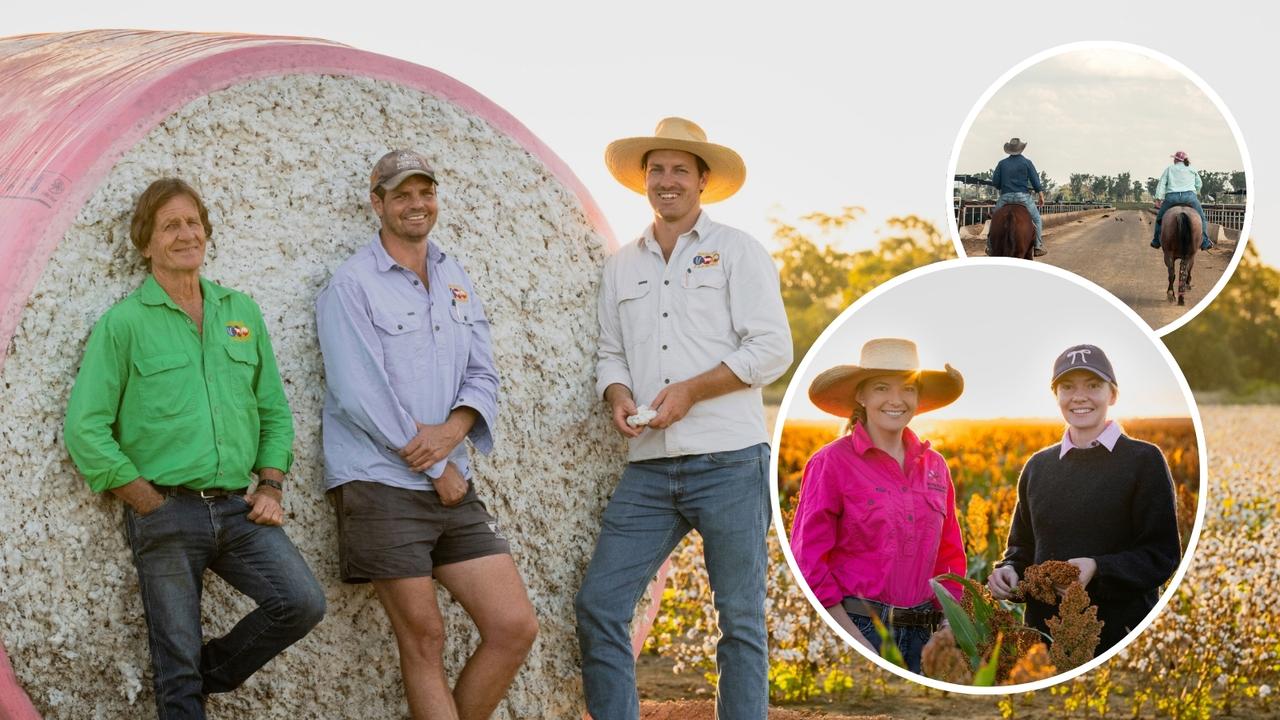Stockyard Beef asparagopsis trial: Is it the answer to livestock methane emissions?
The red meat industry is pumping millions of dollars into a little-known seaweed it hopes will reduce methane emissions. Will it do the job?
Two hours west of Brisbane, thousands of Wagyu and Angus cattle roam in feedlots stretching as far as the eye can see.
The operation, run by livestock company Stockyard Beef, is soon to be the site of one of Australia’s biggest trials into reducing enteric methane emissions, and one of the first in a commercial setting.
There is a lot riding on this and a handful of other trials taking place across the nation.
Australia’s livestock industry has committed to going carbon neutral by 2030, and one of the industry’s key strategies for meeting that target is due to be tested on this site.
About 10 per cent of Australia’s greenhouse gas emissions are generated by the red meat industry. The majority of these emissions are released as methane when livestock belch and fart, according to industry peak body Meat and Livestock Australia.
In the Kerwee feedlot trial, consultancy Bovine Dynamics will feed cattle asparagopsis – a type of seaweed – along with their feed rations.

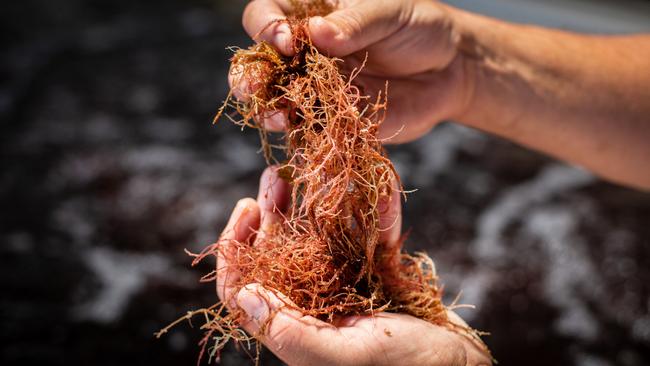
The seaweed, native to Australian waters, and now commercially manufactured as a supplement by Tasmanian-based company SeaForest, has been proven to reduce methane emissions from cattle by up to 98 per cent in a laboratory setting – a scientific breakthrough first discovered a decade ago.
But there is a lot researchers still don’t understand about how the supplement will work, and big question marks hang over its practicality and affordability in a commercial operation.
“We need to measure whether there’s any improvement in the animal’s performance and do taste sensory analysis on the beef to see if there’s any changes to the flavour profiles (of the meat) from feeding that animal that product (asparagopsis),” Bovine Dynamics lead researcher Melissa George says.
“There’s high risk if you change the flavour profile of a product like Stockyard, which is premium Wagyu and Angus beef, you’ve got a problem.”
In order to get commercial operations to buy into feed supplements, researchers need to demonstrate not only that the supplements won’t change the taste of beef products, but also that they will be cost effective.
For Stockfeed Beef general manager Lachie Hart, any new sustainability initiatives he brings into his business need to be profitable.
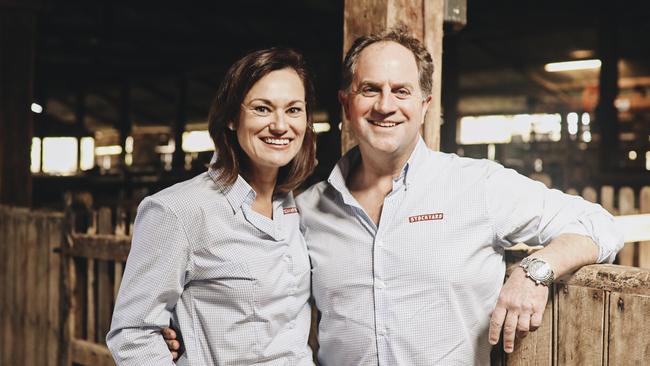

Five years ago, Lachie asked his daughters Alexandra and Rebecca if they would be interested in taking on a role in the family business. When they said sustainability was an important consideration for them when it came to getting more involved, Lachie says he had “doubts”.
“My first instinct was that the sustainability journey was going to blow our costs,” Lachie says
“I said ‘oh my God, this is gonna add an enormous amount of work, enormous layers of cost’.”
For Rebecca and Alexandra, the choice seemed simple.
“I want to be really proud of the organisation that I’m working for. I want to feel authentic about walking the talk, that we are trying to do better in our emissions, trying to do better in looking after our animals and our environment and our people,” says Alexandra.
“I’ve worked for organisations where that hasn’t been the case and it doesn’t feel good to turn up to work every day.”
The year was 2017, and Meat and Livestock Australia had just announced its aim to reach carbon neutrality by 2030.

Initially, Lachie resisted the move.
“I was quite angry (at the time when MLA made the announcement). I was saying ‘where’s the consultation? How dare you make this massive announcement on behalf of the whole industry and not involve us in the discussion?’,” he says.
But over a series of conversations, and careful calculations, he realised that Stockyard Beef’s sustainability targets could be met without costing the company money.
“On reflection, (the MLA decision) was incredibly insightful,” he says.
Stockyard Beef decided to follow the MLA’s lead and set its own CN30 target, but Lachie acknowledges getting there will require a lot of innovation.
“We set that target without really understanding how we were going to get there,” he says.
One thing he is sure of is that any new sustainability measures will need to make financial sense. The company has already installed enough solar power to cover most of its energy needs, and is exploring biodigesters for additional energy generation.
But the majority of the company’s emissions will be harder to shift. When it conducted a carbon inventory, it found 75 per cent of its greenhouse gas emissions came from enteric methane – gas produced by cattle. To reduce those emissions, the company is looking to asparagopsis.
“If we can find a solution to drop that 75 per cent substantially, we can go a long way to achieving carbon neutrality by 2030,” Lachie says.

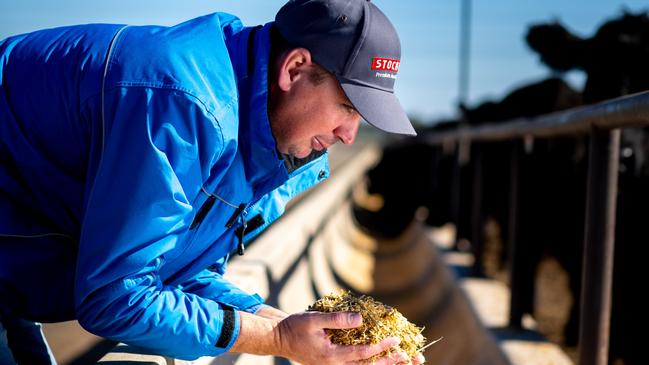
But for the feed supplement to work, it will need to pay for itself by improving performance in the cattle herd, Lachie says.
Early indications suggest reducing the gases and bloating in cattle’s digestive processes could have health benefits for the animals, but there are still a number of question marks.
Melissa George says the trial due to start in the feedlot will measure any improvements in the animals’ performance.
“I’m still cautious. The research has to be completed to be confident that this is a solution, but I sure hope it is,” she says.
“If the cattle don’t like eating the seaweed, their (feed) intake could reduce and they may not gain (weight) as well. Those things have important implications for a feedlot setting.”
Agrifutures business development general manager Michael Beer says producing asparagopsis feed supplements cheaply won’t be an easy task.
The rural industry research group estimates the capital requirement to take asparagopsis farming to 100 per cent adoption in Australia’s feedlot industry would be between $132 million and $1.62 billion.
The potential demand is significant – nearly 27,000 tonnes a year if every lot feeder takes it up.
“The big question for cattle feed is making it pay. We’ve still got to build a lot more efficiency, before those numbers become really attractive. You’ve got to get volume and get your logistics right,” Beer says.
Meat and Livestock Australia has invested $20.2 million in feed additive trials and research since 2017, and the Australian government has funded $4 million worth of trials, including the Stockyard Beef trial, through the Methane Emissions Reduction in Livestock grants.
Other grants include trial funding to GrainCorp, FutureFeed, Agrimix and CSIRO.
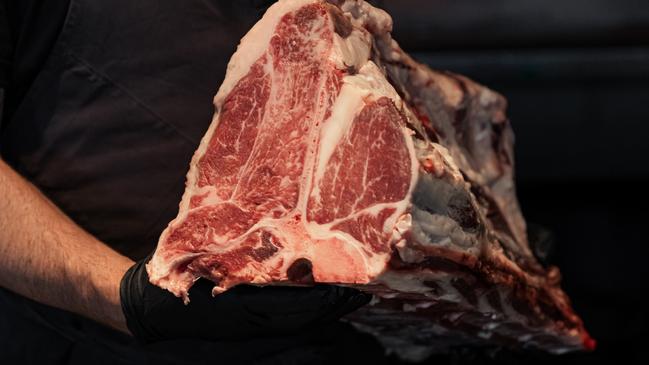
The next big challenge will be finding ways to cut down the methane produced by cattle on pasture, which represent the vast majority – 95 per cent – of the Australian industry.
“We’ve demonstrated that these additives do have a tremendous impact on methane generated in the rumen. What we are trying to solve is how do we deliver those additives to cattle,” says MLA CN30 project manager Julia Waite.
“Obviously it’s an easier problem to solve in the feedlot, where you’ve got single point feeding sources, but what about in the paddock?
“Once we crack that, that’s where we’re going to see that really broad coverage across the industry.”
The association has set an ambitious target for all cattle in Australian feedlots to be fed methane-reducing feed supplements by 2030, and for 50 per cent of grazed cattle to be fed the supplements by the same date.
For now, the Stockfeed Beef trial is waiting for the technology it will use to measure oxygen, carbon dioxide and methane emissions to arrive from the US – the delivery has been delayed due to Covid-19 and shipping issues. The trial is due to report back next year.




